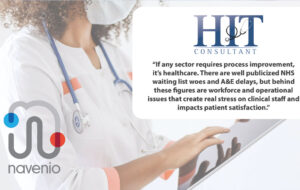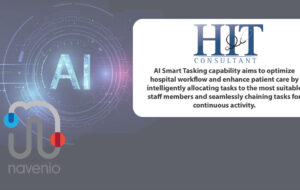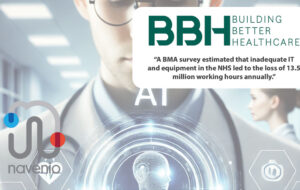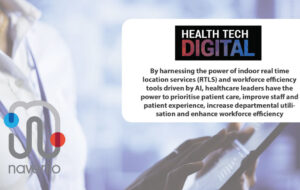Big Pi Ventures: Driving sustainable change: How Navenio is helping nurses get back to the bedside
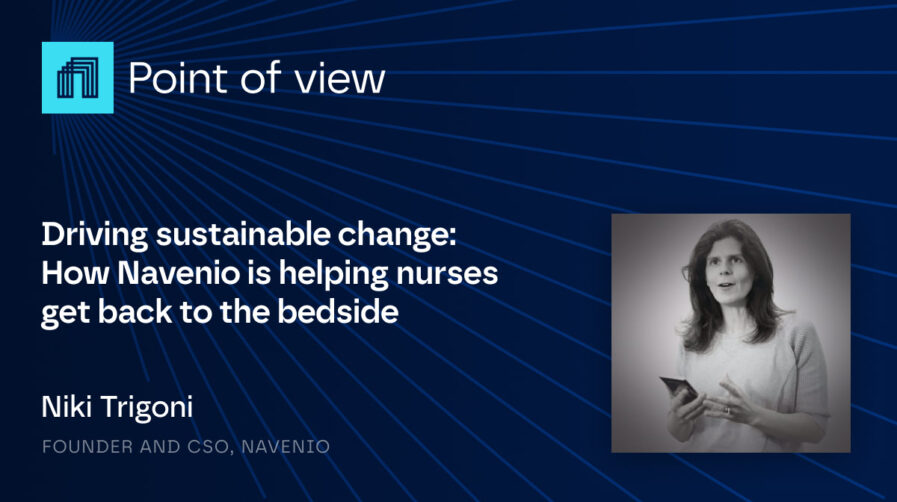
As published on bigpi.vc
If any sector requires process improvement, it’s healthcare. There are well-publicised NHS waiting list woes and A&E delays, with the latest Referral to Treatment (RTT) figures for March 2024 showing that over 7.5 million people are waiting for treatment. However, behind these figures are workforce and operational issues that create real stress on nurses and wider clinical staff, impacting patient satisfaction.
A study revealed that nurses claim that they experience 16-30% preventable wasted time during a shift, with the key factors including waiting for lab data responses, transfer of patients, or delivery of care. With an ageing nursing population and less experienced nurses making up a larger portion of the nursing staff, it is more important than ever to improve process design into structured, efficient care flow practices within the hospital.
However, current levers of change are failing to deliver necessary continuous improvements. Consultants are brought in to redesign processes, but six months later everything returns to stasis. Change in a healthcare context has become inconsistent and unsustainable.
Sustainable process change
Process change tends to stick when it has tangible – or, in some cases, perceived – benefits. If the change will make an employee’s job easier, for example, or it eliminates parts of their job they don’t like or deem low value, then it is much more likely to take hold. But if process change fails to meet this expectation, then the opposite happens.
Sustainable process change requires building operational sustainability into the overall effort, allowing hospitals to optimise resources in real-time, operate within their means and flex for incremental capacity increases.
To do this, hospitals need to introduce new methods for facilitating patient flow, allocating staff and resources, and conducting overall coordination and management, easing the load and improving workflow for nurses.
How can technology drive sustainable improvements?
A new concept called Reverse Bed Chain (RBC) is looking to address failures. RBC is all about driving process improvement by giving nurses tools to fuel activity and optimise resources.
By adding Navenio’s intelligent workforce solution to existing systems, the grouping of patients becomes a single task, displaying the order in which the group of tasks needs to be carried out. Assignment of the task will be based on the task handler’s location within the building, ensuring that they issue the task to the right person who can get to the start location the quickest.
The strategy provides a hub of real-time data that allows for the optimal allocation of staff and resources.
Essentially an Uber for healthcare, staff can access the Navenio app via their smartphones which can track the location of patients, staff and equipment in real-time. This means staff and resources can be smartly allocated to where they are most needed (depending on what is physically closest to the necessary location) and patients can be moved through the hospital most efficiently.
This gives nurses the freedom to proactively drive care and helps build overall operational efficiency. Patient flow is more efficient, staff can access patient information as and when needed, and managers have oversight on trends and can plan more effectively.
The winning approach
Access to real-time data is a requirement for building sustainable change. RBC combines process change strategies with technology like Navenio to deliver significant efficiencies, using real-time data to optimise hospital resources and allow nurses to proactively carry out care. There’s no burst of activity and then a return to previous processes – alongside broader management and coordination strategies, the process lays a foundation for building long-term operational sustainability.
If clinical and non-clinical staff can’t see the visible or perceived impact of process change, it is likely to fail in its mission. The key to unlocking process change is finding ways to give nurses the power to drive processes that follow evidence-based protocols and allow them to see and document the impact – that’s the winner.

